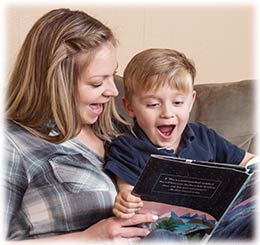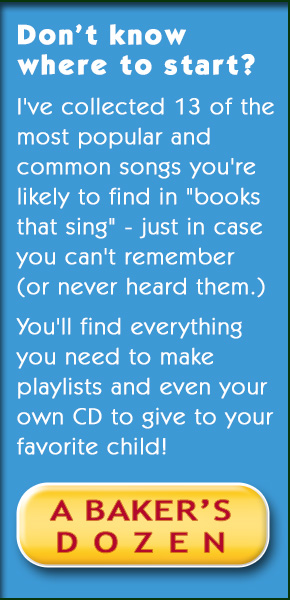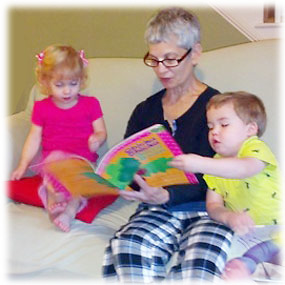|
 |
|
 Putting together these book lists has been quite a journey. I
started off planning to only list books in print. But almost
immediately I realized that would be impossible. The average
book store shelf life of a book is six months! But with the
Internet, and especially Amazon and Ebay it’s possible to locate
so many of these wonderful out-of-print books that I didn’t want
to leave them off the list. You can also find many of them at
your local library. And publishers seem to be re-printing many
old favorites, so the truth is - you never know! As you look
through these lists, first see if they are available at your
local library. Putting together these book lists has been quite a journey. I
started off planning to only list books in print. But almost
immediately I realized that would be impossible. The average
book store shelf life of a book is six months! But with the
Internet, and especially Amazon and Ebay it’s possible to locate
so many of these wonderful out-of-print books that I didn’t want
to leave them off the list. You can also find many of them at
your local library. And publishers seem to be re-printing many
old favorites, so the truth is - you never know! As you look
through these lists, first see if they are available at your
local library.
If you can't find it there (or you want to
keep it or buy it as a gift) print out the list and take it to your local book
store. They can tell you if a book is available through them. If
not, do a search on Amazon.com. If you can’t find the book you
are looking for there (or if it has a ridiculously high price),
don’t give up! Inventory comes and goes, and by being persistent
I have more than once found copies of books that for months had
been unavailable- even at the original price!
|
 |
|
|
In the end, I decided to let you,
the reader, see what is or may be available, and give you the
best tips on locating those titles. To help you concentrate on
an area that attracts you. I've divided them into four groups.
Click on any button below to see the books in that category |
|
 |
Trying to locate a particular
book?
WorldCat.com is a great website that let's you find
books in libraries that are near to where you live.
If you want to purchase an out-of-print book,
try one of these websites:
Amazon,
AbeBooks,
Powels
Used Books, or
Bookfinder . |
|
|
Books based on songs or using repeating
rhythmic phrases can
work magic on a restless group of children, and they are
especially good for building language and early literacy skills.
There are many advantages to reading these types of books to
your child: |
-
 When books are based on songs
children already know, like The
Wheels on the Bus,
or The Itsy Bitsy Spider, they are immediately interactive as
children will naturally sing along. These books offer the
youngest children a way to participate in language. When books are based on songs
children already know, like The
Wheels on the Bus,
or The Itsy Bitsy Spider, they are immediately interactive as
children will naturally sing along. These books offer the
youngest children a way to participate in language.
-
Illustrations vary widely and
often taking the song in a whole new direction. Example: In
The Bear Went Over the Mountain, by Iza Trapani, there are new
verses for each of the five senses. So this traditional song
becomes a wonderful exploration of what the bear could not
only see, but hear, smell, taste, and touch!
-
Songs have words we don’t use
every day, and so are a great way to expand vocabulary. Even
books that stick to the traditional lyrics are packed with
“rare” words (like water spout, curds and whey).
-
Melodies break words into
syllables, helping children build phonemic awareness.
-
Songs tend to have rhythm, rhyme,
and repetition, keys to building memory, and making language
“stick” in the brain.
-
If you don’t remember the melodies
to these traditional songs, don’t worry! I have added or will
be adding traditional versions in the songs library, so you
can listen to and download the song. Adding it to your music
device and playing it in the car or house reinforces the book.
It’s a great way to make this literacy portable!
-
These books often have the melody
and additional activities in the back of the book, so be sure
to look and point out the printed music to your children.
|
|
What You Should Know
About “Books That Sing”
-
The public library is your
best resource! Many wonderful books are out of print, and
the library is your access to those. If you find a book
you really love that’s out of print, you can often find it
on Amazon.com
and Powell.com
(a favorite and well-known independent bookseller in
Portland, Oregon.).
-
If your library is part of a
system, don’t be discouraged if you can’t find what you
want at your branch. In fact I like to order books online
and have them sent to my branch. Most if not all pubic
libraries offer this service and it’s a great way to go
“shopping.” You can also read descriptions, reviews, and
age recommendations all of which it very helpful You can
do this from home in your pajamas after the kids have gone
to bed! Use the list provided on this website as a guide.
-
These books are not located in
one place! This is true whether it’s a book store or a
library. Individual libraries, even in the same library
system, often shelve them differently. Sometimes they are
found in the E782 section, but more often in the picture
book section under the author’s last name. And that is of
little help if you’re just trying to browse the collection
and especially if you have small children in tow! I
suggest you ask a children’s librarian or bookseller to
recommend some of his or her favorites. There are several
illustrators or musicians who have published numerous
books, and that’s a great place to start since they will
be shelved together.
Here are some well-known authors/illustrators of “books
that sing.” They are a great place to begin!
Raffi
Iza Trapini
John M. Langsdaff
Nadine Westcott
Mary Ann Hoberman
These books vary widely in their appeal, both artistically
and with different ages. So check out as many as you can
find and see what you and your child like. They are not
all created equal! See tips to the right..
|
|
|
|
TIPS for
Choosing and Using Picture “Books That Sing”
-
Large clear text,
so children will see how the words are connected to the
illustrations. Sometimes the text is so small it’s hard to
read, or it’s black and placed on a dark background, also
making it hard to read.
-
Page breaks
that allow you to sing the song without unnatural
interruptions in the melody. For instance, you wouldn't’
want a book that had the words “Old MacDonald had
a…….(page turn)……..farm.” The whole point is to have the
book, its illustrations, and the song flow together.
-
Consider your listener!
If reading to a single child on your lap, detailed
illustrations can be a wonderful way to develop narrative
skills, but be prepared to stop the singing at any time!
If you are sharing the book with a group of children, you
will want clear simple illustrations that can be seen from
a distance, and without too many distractions.
Practice reading and singing the book first and have fun
with your voice! For example, Over in the Meadow has
different animals. Singing each verse with a different
voice makes it more fun and entertaining.
-
Don’t forget to show the
children the sheet music
which is often in the front or back of the book. They love
seeing what the song “looks” like. There are often
additional activities and information for you at the end
of the book, so take the time to look for that as well.
-
If you find a book your
child LOVES, I urge you to buy it.
If it’s a recent publication you may be able to buy it
new. But books have limited lives, so don’t wait! If it’s
out of print you can often find it on Amazon. Keeping a
collection of your child’s favorite childhood books is a
wonderful gift to be able to give them later in life.
-
If you are a grandparent
and your grandchildren live far away, it’s fun to record
you reading and singing the book, putting it on a CD, and
sending it along with the book. A great way to stay
connected!
|
|
|
|



